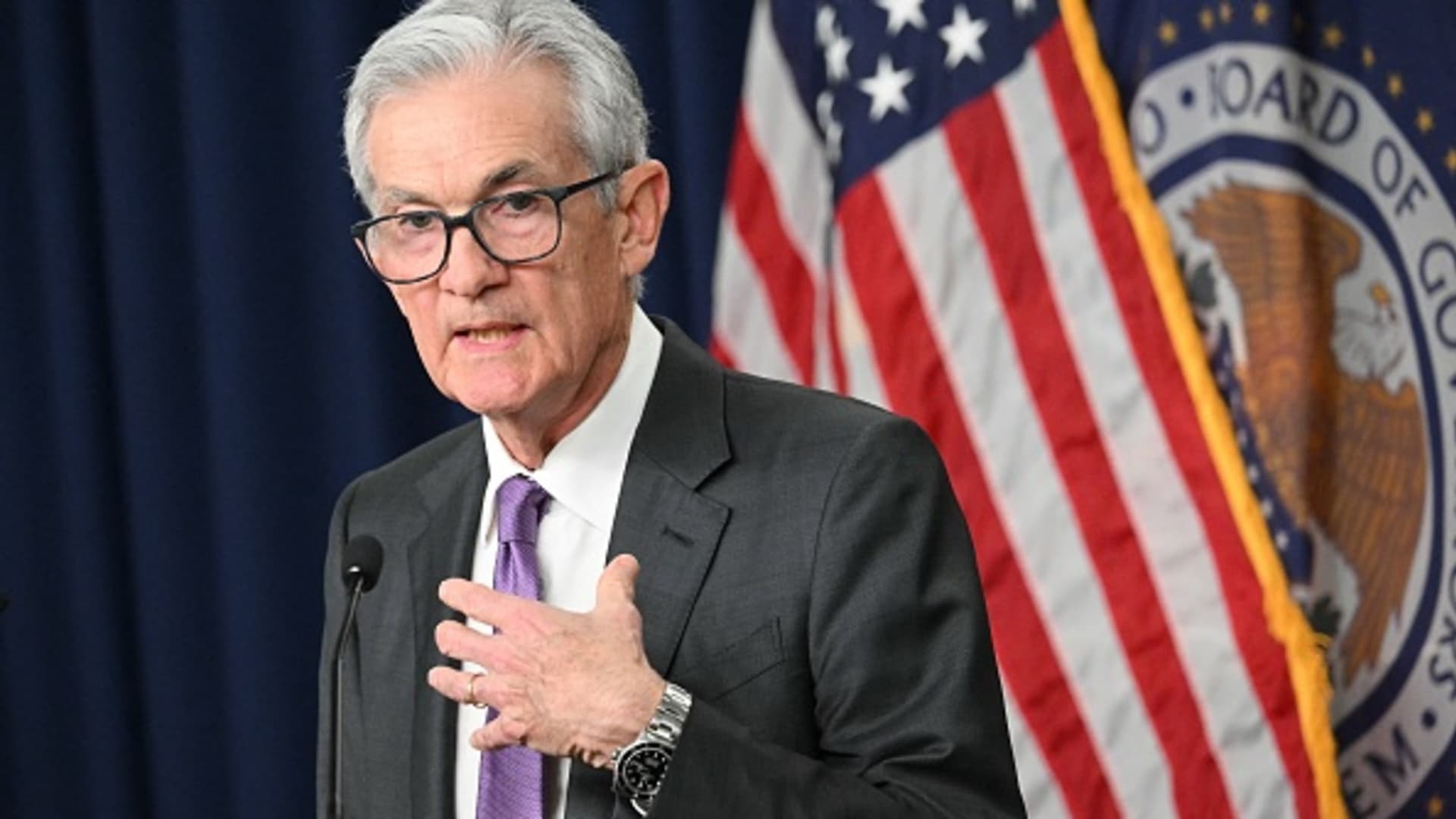Products You May Like
WASHINGTON – The Federal Reserve on Wednesday held its ground on interest rates, again deciding not to cut as it continues a battle with inflation that has grown more difficult lately.
In a widely expected move, the U.S. central bank kept its benchmark short-term borrowing rate in a targeted range between 5.25%-5.50%. The federal funds rate has been at that level since July 2023, when the Fed last hiked and took the range to its highest level in more than two decades.
The rate-setting Federal Open Market Committee did vote to ease the pace at which it is reducing bond holdings on the central bank’s mammoth balance sheet, in what could be viewed as an incremental loosening of monetary policy.
With its decision to hold the line on rates, the committee in its post-meeting statement noted a “lack of further progress” in getting inflation back down to its 2% target.
“The Committee does not expect it will be appropriate to reduce the target range until it has gained greater confidence that inflation is moving sustainably toward 2 percent,” the statement said, reiterating language it had used after the January and March meetings.
The statement also altered its characterization of its progress toward its dual mandate of stable prices and full employment. The new language hedges a bit, saying the risks of achieving both “have moved toward better balance over the past year.” Previous statements said the risks “are moving into better balance.”
Beyond that, the statement was little changed, with economic growth characterized as moving at “a solid pace,” amid “strong” job gains and “low” unemployment.
Chair Jerome Powell during the news conference following the decision expanded on the idea that prices are still rising too quickly.
“Inflation is still too high,” he said. “Further progress in bringing it down is not assured and the path forward is uncertain.”
However, investors were pleased by Powell’s comment that Fed’s next move was “unlikely” to be a rate hike. The Dow Jones Industrial Average jumped after the remarks, and was recently up about 500 points. He also stressed the need for the committee to make its decisions “meeting by meeting.”
On the balance sheet, the committee said that beginning in June it will slow the pace at which it is allowing maturing bond proceeds to roll off without reinvesting them.
‘Quantitative tightening’
In a program begun in June 2022 and nicknamed “quantitative tightening,” the Fed had been allowing up to $95 billion a month in proceeds from maturing Treasurys and mortgage-backed securities to roll off each month. The process has resulted in the central bank balance sheet to come down to about $7.4 trillion, or $1.5 trillion less than its peak around mid-2022.
Under the new plan, the Fed will reduce the monthly cap on Treasurys to $25 billion from $60 billion. That would put the annual reduction in holdings at $300 billion, compared with $720 billion from when the program began in June 2022. The potential mortgage roll-off would be unchanged at $25 billion a month, a level that has only been hit on rare occasions.
QT was one way the Fed used to tighten conditions after inflation surged, as it backed away from its role of assuring the flow of liquidity through the financial system by buying and holding large amounts of Treasury and agency debt. The reduction of the balance sheet roll-off, then, can be seen as a slight easing measure.
The funds rate sets what banks charge each other for overnight lending but feeds into many other consumer debt products. The Fed uses interest rates to control the flow of money, with the intent that higher rates will dampen demand and thus help reduce prices.
However, consumers have continued to spend, running up credit indebtedness and decreasing savings levels as stubbornly high prices eat away at household finances. Powell has repeatedly cited the pernicious effects of inflation, particularly for those at the lower-income levels.
Prices off peak levels
Though price increases are well off their peak in mid-2022, most data so far in 2024 has shown that inflation is holding well above the Fed’s 2% annual target. The central bank’s main gauge shows inflation running at a 2.7% annual rate – 2.8% when excluding food and energy in the critical core measure that the Fed especially focuses on as a signal for longer-term trends.
At the same time, gross domestic product grew at a less-than-expected 1.6% annualized pace in the first quarter, raising concerns over the potential of stagflation with high inflation and slow growth.
Most recently, the Labor Department’s employment cost index this week posted its biggest quarterly increase in a year, sending another jolt to financial markets.
Consequently, traders have had to reprice their expectations for rates in a dramatic fashion. Where the year started with markets pricing in at least six interest rate cuts that were supposed to have started in March, the outlook now is for just one, and likely not coming until near the end of the year.
Fed officials have shown near unanimity in their calls for patience on easing monetary policy as they look for confirmation that inflation is heading comfortably back to target. One or two officials even have mentioned the possibility of a rate increase should the data not cooperate. Atlanta Fed President Raphael Bostic was the first to specifically say he only expects one rate cut this year, likely in the fourth quarter.
In March, FOMC members penciled in three rate cuts this year, assuming quarter percentage point intervals, and won’t get a chance to update that call until the June 11-12 meeting.
Correction: The Federal Reserve’s next meeting is June 11-12. An earlier version of this story misstated the date.
